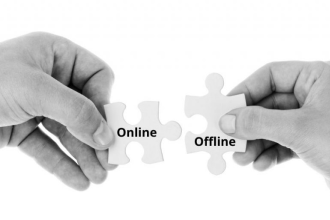The Power of Knowing the User: Customer Data Platforms at a Glance
What is customer data?
Before we go into too much detail, what exactly is customer data? Simply put, it is all the information that can be collected about your customers and potential customers. This can include demographic data, such as age, gender and location, but it can also include data about buying habits, preferences and behavior. This information is valuable because it can help you better understand your audience and target your marketing efforts. For example, if you know that the majority of your customers are women between the ages of 25 and 34 living in a certain city, you can focus your advertising and other marketing efforts on that group. This way, you can make sure you are reaching the right audience with the right message.
Customer data can also be useful for analyzing the performance of your marketing campaigns. For example, if you see that a certain campaign is generating a good number of clicks, but that most users are not taking any action after clicking on the ad, you may need to change the focus of the campaign. Overall, the better you understand your customers and how they interact with your brand, the better you can tailor your marketing strategies to get the best results.
What is a CDP (Customer Data Platform)?
A customer data platform (CDP) is marketing software that collects and manages customer data in a single database. It is a comprehensive solution for organizing and managing all customer data, from leads to current and former customers. CDPs collect data from multiple sources and store it in a single place, allowing marketers to access a complete, integrated view of each customer. This is especially useful for companies with large databases or that use a variety of systems and tools.
CDPs also offer advanced features for customer segmentation, analysis and tracking, as well as the ability to integrate with other marketing tools. They can also provide valuable insights into customer behavior, such as what products they are looking for and when they are most likely to buy.
A CDP can significantly improve marketing effectiveness by enabling marketers to better segment their customers, send them more personalized messages and optimize the use of other marketing channels.
How can I really get to know my customers?
As mentioned above, a CDP collects and organizes data from your customers so that you can analyze and use it in the best possible way. In other words, it is a very valuable tool for any brand that wants to gain more insight into its customers.
Here are 5 ways you can use a CDP to improve your customer knowledge:
Identification of potential customers
There is a wealth of data that can be collected on digital properties, and this can be used to identify those users most likely to take valuable brand actions, such as making a purchase.
2. Creation of customer profiles
This allows you to learn more about your customers and what they like and don't like. It will also help you better understand what they are looking for and what they need.
Customer segmentation
Once you have identified your potential customers, segmentation will allow you to create more effective targeted campaigns.
4. Measuring campaign performance
This will let you know if your campaigns are working and if they are having the desired impact. You will also be able to gain valuable information about which strategies are working and which are not.
5. Improved knowledge of customer behavior
This will be achieved by analyzing the data collected by the CDP. You will be able to better understand what your customers are doing within your digital properties and thus be able to make better decisions based on this data.
CDP vs DMP vs CRM
Sometimes, it can be hard to keep up with all the technical jargon, so in this section, we'll cover the differences between three of the most common terms in marketing: CDP, DMP and CRM.
As mentioned earlier, CDP, or Customer Data Platform, refers to a software platform used to collect, store and manage customer data. It is useful in helping companies build a 360-degree database of their customers, enabling them to deliver personalized customer experiences.
On the other hand, DMP, or Data Management Platform, is a type of software used to organize and analyze data. It can help companies better understand their campaigns and make predictions about future customer behavior.
And finally, CRM, or Customer Relationship Management, refers to a set of tools and techniques used to manage customer relationships. These solutions can include tracking customer behavior, managing contacts and automating marketing tasks.
So, which is the most suitable tool? It depends on the needs you want to satisfy. In general, if you want to use a large amount of third party data, a DMP will be the best choice. Likewise, if you want to manage customer relationships, CRM is the way to go. If you are looking for personalization and targeted marketing that can scale and there is a concern about the uncertain future of third party cookies, a CDP is undoubtedly the tool of choice.
How to choose a PDC?
When it comes to choosing one, there are many variables to consider. First, it is important to identify what type of data you want to capture and store. Do you need structured or semi-structured data? Is it internal or external data?
You also need to consider the scale of the data. Do you want to capture and store data from a small group of customers or do you need a solution that can handle millions of records?
Another important factor is budget. PDCs can vary significantly in price, so it is important to set a limit before you start researching.
Once you have an idea of what you need, you can start researching the different PDCs on the market. Here are some things to keep in mind when comparing the different options:
–Functionality: What kind of functionality does the PDC offer, is it easy to use, and is it well documented?
–Integration: Will the PDC integrate with other systems and applications, and is there detailed documentation on how to do this?
–Price: How much does the PDC cost and how does your charging system work? Are upgrade and support costs included?
Researching the different PDCs on the market can be a long and complicated process, but it is worth doing it to find the perfect solution for your business.
Now that we have delved into the fundamental concepts, we have come to some interesting conclusions about the role of the Customer Data Platform (CDP) in modern marketing. In a nutshell, a CDP is a technology tool that allows companies to efficiently collect, store and manage their customer data. But it is much more than that. A CDP can also provide companies with a wealth of valuable insights about their customers, enabling them to make more strategic and effective marketing decisions. In short, a CDP is a real gem for any marketing department looking to improve its effectiveness and grow its business.



